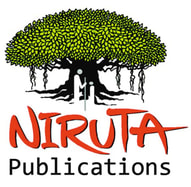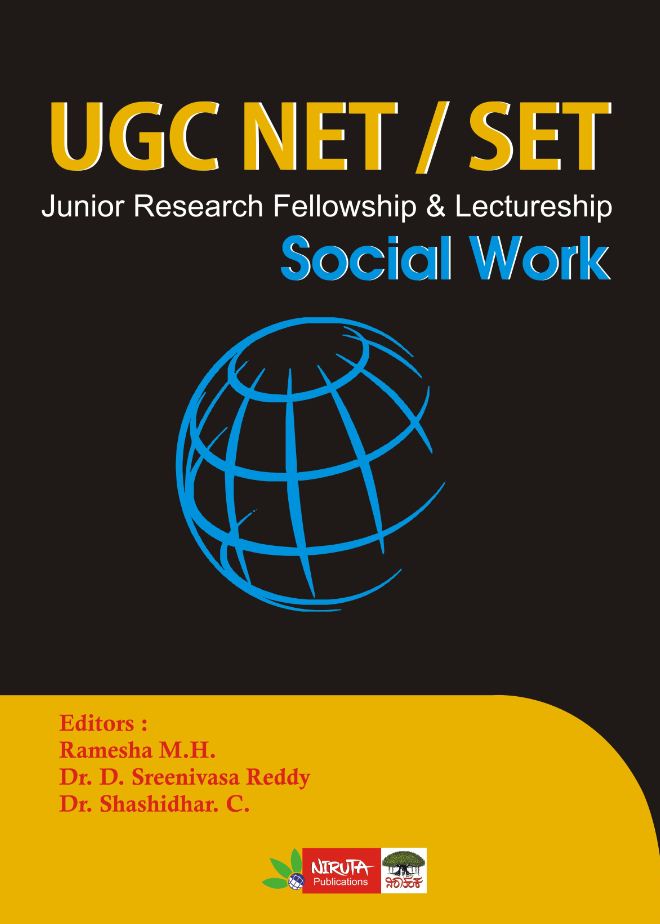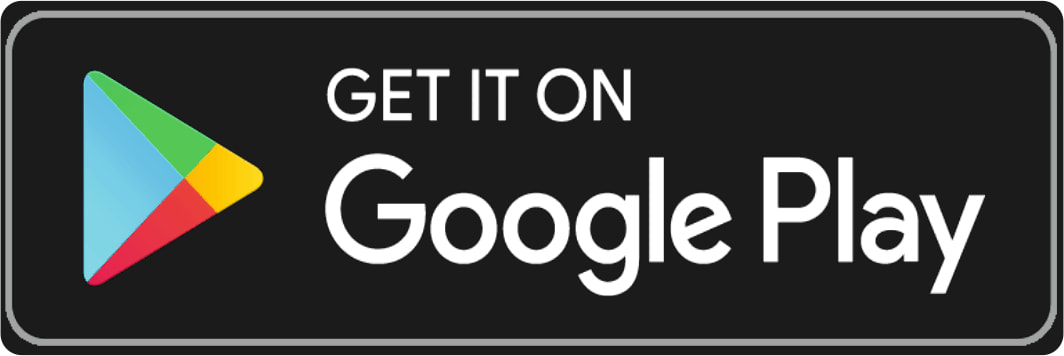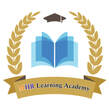|
Note : This paper contains seventy five (75) objective type questions of two (2) marks each. All questions are compulsory. 1. Group members can help minimize conflict by (A) creating harmony in the group by agreeing with other group members. (B) being aware of what stage of group formation the group is passing through. (C) aiming for cultural consensus. (D) being respectful of other’s ideas and culture and aiming for consensus. 2. What is the phenomenon of actions that are contemplated only in a group context ? (A) Group conformity (B) Reference groups (C) Group think (D) Leadership styles 3. The special grant for tribal welfare is provided under
(A) Article 245 (B) Article 275 (C) Article 345 (D) Article 325 4. Unorganized sector in India comprises approximately ……………………. of the working population. (A) 50% (B) 90% (C) 25% (D) 75% 5. The systematized and established way of living together is (A) Society (B) Community (C) Institution (D) Social structure 6. A couple expressing extreme anger at each other come to a social worker for marital counselling. The social worker should first (A) explore the goals the anger is marking. (B) clarify whether each partner is willing to hear the other. (C) acknowledge the anger each partner has towards the other. (D) use the interview to probe for positive feelings each has for the other. 7. ‘Ethnocentrism’ means (A) Superiority of one’s own culture (B) Inferiority of one’s own culture (C) Superiority of one’s own class (D) Inferiority of one’s own class 8. A detailed plan for obtaining data scientifically is called (A) Sample (B) Experiment (C) Scientific method (D) Research design 9. Giving fair share of benefits to members of society is (A) Retributive justice (B) Distributive justice (C) Procedural justice (D) Restorative justice 10.Provisions relating to health are given in which chapter of the Factories Act, 1948 ? (A) Chapter-II (B) Chapter-III (C) Chapter-IV (D) Chapter-V 11.The policy that deals with the organization of learning and teaching are ………… (A) Economic policy (B) Education policy (C) Health policy (D) Hosing policy 12.CSWE stands for _________. (A) Council of Social Welfare Enhancement (B) Council of Social Work Education (C) Centre for Social Work Education (D) Centre for Social Work Empowerment 13. …………………… Model was propounded by Witmer. (A) System (B) Remedial (C) Developmental (D) Preventive 14. ………………… is also called as neo-conservative approach. (A) New right approach (B) Social democratic approach (C) Radical socialist approach (D) Feminist approach 15.In ethnographic studies, case study were first used by __________. (A) Burgess (B) Fredric Le Play (C) Herbert Spencer (D) Znaniecki 16. …………………. is a type of concurrent evaluation (A) Exploratory research (B) Historical research (C) Action research (D) Descriptive research 17.Who has written the book “Development Psychology : A Life Span Approach” ? (A) S. Narayan Rao (B) Elizabeth B. Hurlock (C) G. Murphy (D) B.F. Skinner 18.Gordon Allport is best known for his work on (A) Personality (B) Suicide (C) Community (D) Learning 19.“Society has been gradually progressive towards a better state” was said by (A) Emile Durkheim (B) Auguste Comte (C) Herbert Bisno (D) Herbert Spencer 20.Albert Bandura has proposed ……………. as a key component of human personality development. (A) Observational learning (B) Theoretical learning (C) Conditioned learning (D) Operant conditioning 21.Coping mechanism is also termed as ……………... (A) Life instinct (B) Fighting (C) Arguing (D) Survival skills 22.ADHD stands for (A) Anxiety Deficit Hyperactivity Disorder (B) Adolescent Depressive Hyperactivity Disorder (C) Attention Deficit Hyperactivity Disorder (D) Attention Depressive Hyperactivity Disorder 23.Kolhberg was involved in the development of __________. (A) Theories of moral reasoning (B) Stage theories (C) Conflict theories (D) Transactional theories 24.‘Grapes are Sour’ attitude exemplifies which defense mechanism ? (A) Displacement (B) Reaction formation (C) Identification (D) Rationalization 25.Ego state referred to by Transactional Analysis Theory does not include (A) Child (B) Sibling (C) Parent (D) Adult 26.Locate the mode from the following : 7, 12, 8, 5, 9, 6, 10, 9, 4, 9, 9 (A) 9 (B) 8.5 (C) 8 (D) 1 0 27.Intrusive thought is associated with (A) Attention Deficit Hyperactive Disorder (B) Oppositional Defiance Disorder (C) Post-Traumatic Stress Disorder (D) Obsessive Compulsive Disorder 28.Which is not a purpose of exploratory study ? (A) Generating new ideas (B) Increase familiarity with the problems (C) Determining feasibility of attempting the study (D) Predicting events 29. Rastriya Mahila Kosh is also known as ________. (A) National Credit Fund for Women (B) National Council for Women (C) National Commission for Protection of Child Rights (D) Central Social Welfare Board 30.Sustainable development ensures the wellbeing of individual by _________. (A) Social development (B) Environmental conservation (C) Environmental protection (D) All the above 31.The Indian Civil Rights Act was enacted in (A) 1958 (B) 1962 (C) 1968 (D) 1972 32.Choose the wrong pair : (A) Period of Zygote – Pre-natal period (B) Period of Embryo – Fertilization to second week (C) Neonate – Infancy (D) Partunate – Still cutting umbilical cord 33.Which of the following is not a benefit given under the ESI Act, 1948 ? (A) Funeral Assistance (B) Sickness Benefit (C) Maternity Benefit (D) Employment Benefit 34.Which is not a mode of settlement of disputes under Industrial Disputes Act, 1947 ? (A) Conciliation (B) Adjudication (C) Arbitration (D) Interrogation 35.The book “Group Processes in Social Work : A Theoretical Synthesis” is written by (A) H.B. Trecker (B) Tom Douglas (C) William J. Reid (D) Francis J. Turner 36.The Theosophical Society was first introduced by (A) Madam Blavatsky (B) Sir A.O. Hume (C) Surendranath Banerjee (D) Swami Vivekanand 37.Which is not a technique of interviewing ? (A) Exploring (B) Intimidating (C) Topical shift (D) Generalization 38.Who was the Chair man of the Poor Law Commission of 1905 of England ? (A) Thomas Chalmers (B) Samuel Augustas Barnet (C) Gordon Hamilton (D) Edward Edison 39.The book “Social Work Treatment : Interlocking Theoretical Approaches” is written by (A) Francis J. Turner (B) Arthur Dunham (C) Walter A. Friedlander (D) R.A. Skidmore 40.According to H.H. Pearlman which is not a type of diagnosis in social work ? (A) Clinical (B) Dynamic (C) Etiological (D) Etimological 41.Conscientization ultimately leads to……………….. (A) Networking (B) Planning (C) Organising (D) Social transformation 42.Gordon Hamilton propounded…………………… (A) Psychoanalytical Approach (B) Psychosocial Approach (C) Problem Solving Approach (D) Behaviour Modification Approach 43. ………………….. is the blue print of Research. (A) Research Design (B) Research Problem (C) Research Hypothesis (D) Research Tool 44. ………………………. is a fact finding investigation. (A) Exploratory design (B) Intervention study (C) Action research (D) Descriptive study 45.The factor which is influenced by other factor is __________. (A) Dependent variable (B) Independent variable (C) Intervening variable (D) Confounding variable 46.f-test was designed by _________. (A) R.A. Fisher (B) Karl Pearson (C) Karl Popper (D) Francis Golton 47.National Social Assistance Programme was initiated in ____________. (A) August 1985 (B) January 1985 (C) August 1995 (D) January 1995 48.Which is not correct about collective bargaining? (A) It is a process. (B) It is tripartite. (C) Agreement is reached by negotiations (D) Confrontation has no place 49. ………………………… is also known as Engineering Approach developed by Taylor. (A) Classical Approach (B) Behavioural Approach (C) Development Approach (D) System Approach 50.The behavioural model is based on ……………………. (A) System theory (B) Learning theory (C) Psychodynamic theory (D) Conflict theory 51.Four World Conferences on Women were convened by UN in the last century for promoting gender equality. Arrange the venues in the order of the year, starting from first conference. I. Nairobi II. Beijing III. Mexico IV. Copenhagen (A) I, IV, II, III (B) II, I, III, IV (C) III, IV, I, II (D) IV, III, I, II 52.The order of the Maslow Hierarchy of Needs is I. Deficit needs II. Safety needs III. Esteem needs IV. Affiliation needs Codes : (A) III, IV, II, I (B) I, II, III, IV (C) II, I, IV, III (D) I, II, IV, III 53.Assertion (A) : Economic justice is concerned with giving all the members of society a fair share. Reason (R) : The possible criteria of distribution are equity, equality and need. Choose your answer from the codes given below : Codes : (A) Both (A) and (R) are correct and (R) is the correct explanation of (A). (B) Both (A) and (R) are not correct. (C) Both (A) and (R) are correct, but (R) is not the correct explanation of (A). (D) (A) is correct, but (R) is not the correct explanation of (A). 54.Assertion (A) : Series of steps are necessary to deal acute stress. Reason (R) : Crisis intervention offers immediate help to a person to re-establish equilibrium. Choose your answer from the codes given below : Codes : (A) Both (A) and (R) are correct. (B) Both (A) and (R) are not correct. (C) (A) is correct, but (R) is not correct. (D) (A) is not correct, but (R) is correct. 55.Assertion (A) : Records should neither be too long nor too short. Reason (R) : There should be certain degree of uniformity. Choose your answer from the codes given below : Codes : (A) Both (A) and (R) are correct and (R) is the correct explanation of (A). (B) Both (A) and (R) are not correct. (C) Both (A) and (R) are correct but (R) is not the correct explanation of (A). (D) (A) is correct, but (R) is not correct. 56.Assertion (A) : Extroverts are often impatient with slow jobs. Reason (R) : Extroverts have some problems in communication. Choose your answer from the codes given below : Codes : (A) Both (A) and (R) are correct. (B) Both (A) and (R) are not correct. (C) (A) is correct, but (R) is not correct. (D) (A) is not correct, but (R) is correct. 57. Assertion (A) : ‘National Policy on Empowerment of Women’ (NPEW) aims at advancement and development of women in India. Reason (R) : PRIs have been assigned important role in NPEW for enhancing women’s participation. Codes : (A) Both (A) and (R) are wrong. (B) Both (A) and (R) are correct. (C) (A) is wrong, but (R) is correct. (D) (A) is correct, but (R) is wrong. 58.Assertion (A) : SEWA is the only Trade Union in the unorganized sector by women. Reason (R) : Women can and do build strong, vital organizations around issues relevant to them. Codes : (A) Both (A) and (R) are true and (R) is not the correct explanation of (A). (B) Both (A) and (R) are true and (R) is the correct explanation of (A). (C) (A) is true and (R) is false. (D) (A) is false and (R) is true. 59.Assertion (A) : According to Payment of Bonus Act, an employer shall pay atleast 8.33% of wages as Bonus to the eligible employees. Reason (R) : 8.33% of wages denotes one month wage earned by the eligible employees. Codes : (A) (A) and (R) are true and (R) is the correct explanation of (A). (B) (A) and (R) are true, but (R) is not the correct explanation of (A). (C) (A) is true and (R) is not true. (D) (A) and (R) are false. 60.Assertion (A) : Aversion therapy helps in modifying the behaviour by providing rewards. Reason (R) : The removal of the positive re-enforcement or averse stimuli may be involved in reward system. Choose your answer from the codes given below : Codes : (A) Both (A) and (R) are correct and (R) is the correct explanation of (A). (B) Both (A) and (R) are not correct. (C) Both (A) and (R) are correct, but (R) is not the correct explanation of (A). (D) (A) is correct, but (R) is not the correct explanation of (A). 61.Assertion (A) : Code of Ethics in social work profession is important and essential. Reason (R) : Code of Ethics evolves as situations present themselves and needs are identified. Codes : (A) Both (A) and (R) are correct. (B) (A) is correct, but (R) is wrong. (C) (A) is wrong, but (R) is correct. (D) Both (A) and (R) are wrong. 62.Which among the following is not the correct matched ? (A) Freud – Psychoanalysis (B) Adler – Achievement Motivation (C) Jung – Understanding the Collective Unconscious (D) Lewin – The Life Space 63.Match the following persons List – I with the area they are associated with List – II : List – I List – II a. R. Titmas i. Social Group Work b. C.R. Banerjee ii. Social Policy c. Sunderlal Bahuguna iii. Social Case Work d. P.R. Balgopal iv. Environmental Movement Codes : a b c d (A) ii iii iv i (B) i iv iii ii (C) ii iii iv i (D) iii ii iv i 64.Match the List – I with List – II and select the correct answers from the codes given below : List – I List – II a. Basic needs approach i. Begin where the client is b. Acceptance ii. Pre-requisite to problem solving c. Participatory approach iii. Rural development d. Social learning iv. Modern approach Codes : a b c d (A) i iii ii iv (B) iv i ii iii (C) iii i iv ii (D) iv ii i iii 65.Match List – I with List – II and select the correct answer from the codes given below : List – I List – II a. Perceptual skills i. Problem situational challenges b. Cognitive change skill ii. Strengthening external support c. Support networking skills iii. Restructuring thoughts d. Problem solving skills iv. Decision making Codes : a b c d (A) i iii ii iv (B) i iv ii iii (C) i iii iv ii (D) i ii iv iii 66.Match List – I with List – II and select the correct answer from the codes given below : List – I List – II a. Social goal model i. Change agent b. Reciprocal model ii. Sensitivity training c. Remedial model iii. Mutual aid d. T-group model iv. Enabler Codes : a b c d (A) iv iii i ii (B) ii iii iv i (C) iii ii iv i (D) iv i iii ii 67.Match List – I with List – II and select the correct answer from the codes given below : List – I List – II a. The Gratuity Act i. 1936 b. The Employment Exchange Act ii. 1952 c. The Payment of Wages Act iii. 1972 d. The Indian Mines Act iv. 1957 Codes : a b c d (A) iii iv i ii (B) i ii iii iv (C) iv iii ii i (D) i iv iii ii 68.Arrange the following Acts in the order in which they were enacted : I. The Industrial Disputes Act II. Trade Union Act III. Employees State Insurance Act IV. Equal Remuneration Act Codes : (A) I, II, III, IV (B) II, I, III, IV (C) III, II, IV, I (D) IV, III, II, I 69.Put the following steps in the process of Participatory Rural Appraisal in sequence : I. Use of tools II. Report generation III. Rapport building IV. Initial contact V. Sharing the learning VI. Participating Action Planning Codes : (A) IV, III, I, II, V, VI (B) IV, II, III, I, V, VI (C) II, IV, III, I, V, VI (D) IV, I, III, II, V, VI 70.Arrange the following reform movements in order in which they appeared. Use codes given below : I. Ramakrishna Mission II. Swadeshi Movement III. Arya Samaj IV. Brahmo Samaj Codes : (A) IV, I, III, II (B) IV, II, I, III (C) IV, III, I, II (D) I, III, II, IV Read the passage given below and answer the following questions as per the understanding the passage : (Q. Nos. 71 to 75) India is a country of myriad contradictions. On the one hand, it has grown to be one of the largest economies in the world, and an increasingly important player in the emerging global order, on the other hand, it is still home to the largest number of people living in absolute poverty and the largest number of undernourished children. What emerges is a picture of uneven distribution of the benefits of growth which many believe, is the root cause of social unrest. Companies too have been the target of those perturbed by this uneven development and as a result, their contributions to society are under severe scrutiny. With increasing awareness of this gap between the haves and the have-nots, this scrutiny will only increase over time and societal expectations will be on the rise. Many companies have been quick to sense this development, and have responded proactively while others have done so only when pushed. Governments as well as regulators have responded to this unrest and the National Voluntary Guidelines for Social, Environmental and Economic Responsibilities of Business and the CSR clause within the Companies Act, 2013 are two such instances of the steps taken. This combination of regulatory as well as social pressure has meant that companies have to pursue their CSR activities more professionally. There is a need to bring together good practices of companies and grant-making foundations so as to assist companies pursue their CSR activities effectively, while remaining aligned with the requirements of the Companies Act, 2013. The concept of CSR has evolved and now encompasses all related concepts such as triple bottom line, corporate citizenship, philanthropy, strategic philanthropy, shared value, corporate sustainability and business responsibility. CSR is “the responsibility of enterprises for their impacts on society”. To completely meet their social responsibility, enterprises “should have in place a process to integrate social, environmental, ethical human rights and consumer concerns into their business operations and core strategy in close collaboration with their stakeholders”. 71.The social expectations about the contribution of companies have increased due to (A) Increasing awareness of people (B) Increasing gap between haves and have-nots (C) Uneven development (D) Increased societal pressure 72.The root cause of social unrest in India is (A) Abundance of population living in absolute poverty. (B) The uneven distribution of the benefits of growth. (C) Large number of malnourished children. (D) Increasing gap between haves and have-nots. 73. Companies are expected to pursue CSR activities professionally due to (A) National voluntary guidelines (B) Regulatory and societal pressure (C) Requirement of Companies Act, 2013 (D) Good practices 74.The CSR activities of companies can be made more effective and professional (A) by meeting social responsibility (B) by exempting them from requirements of the Companies Act, 2013 (C) by encompassing triple-bottom line and strategic philanthropy (D) by bringing together good practices of companies and grants-making foundation 75.In order to meet their social responsibility, companies should (A) pursue sustainability (B) be philanthropic in approach (C) work in collaboration with their stakeholders (D) encompass corporate citizenship
0 Comments
Your comment will be posted after it is approved.
Leave a Reply. |
UGC NET Training for
Social Work We are pleased to announce the training programme on “UGC NET Social Work”. The details of which are as under. It covers in detail the UGC NET Social Work syllabus and previous question papers.
Categories
All
|
SITE MAP
SiteTRAININGJOB |
HR SERVICESOTHER SERVICESnIRATHANKA CITIZENS CONNECT |
NIRATHANKAPOSHOUR OTHER WEBSITESSubscribe |
MHR LEARNING ACADEMY
50,000 HR AND SOCIAL WORK PROFESSIONALS ARE CONNECTED THROUGH OUR NIRATHANKA HR GROUPS.
YOU CAN ALSO JOIN AND PARTICIPATE IN OUR GROUP DISCUSSIONS.
YOU CAN ALSO JOIN AND PARTICIPATE IN OUR GROUP DISCUSSIONS.
|
|


 RSS Feed
RSS Feed





